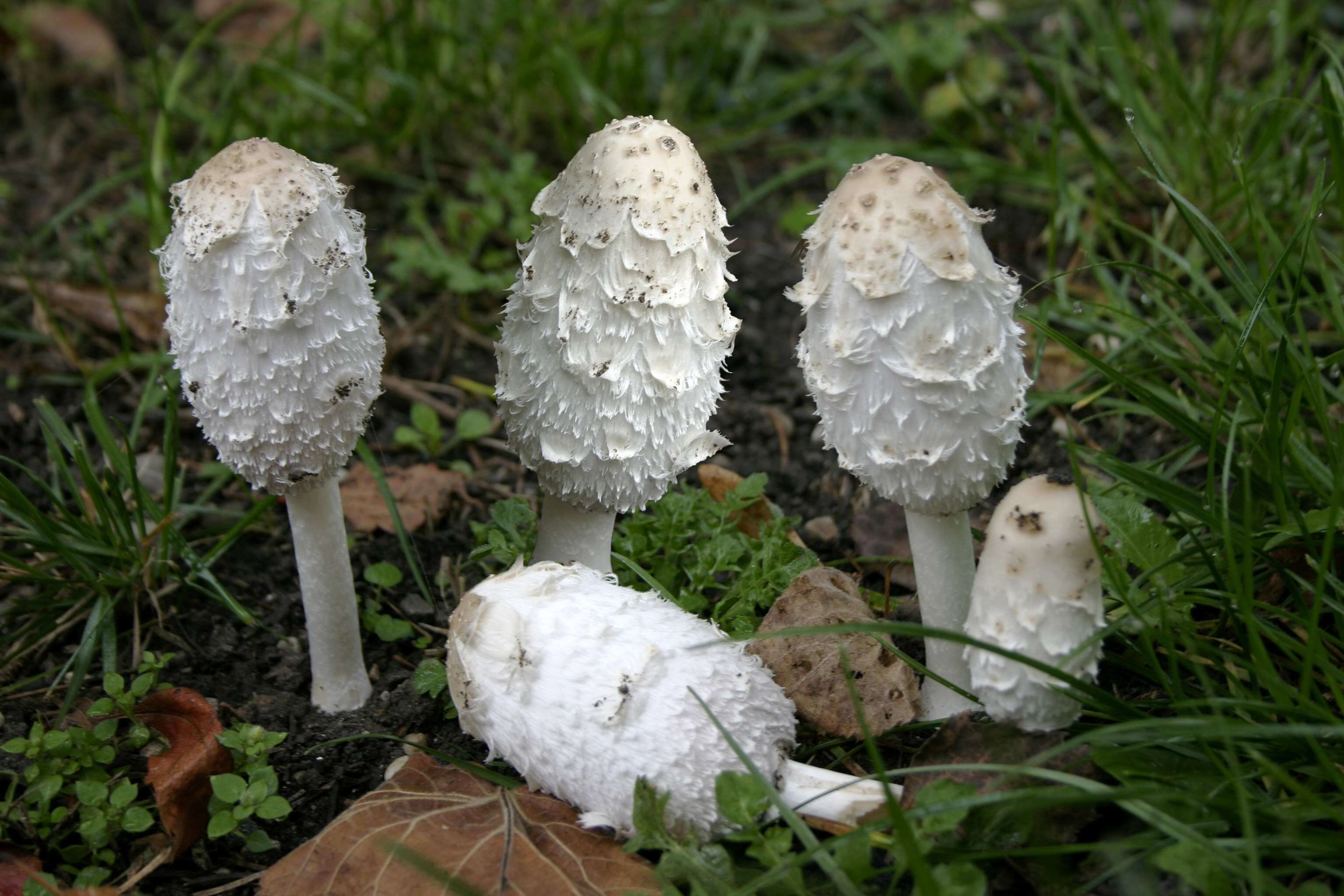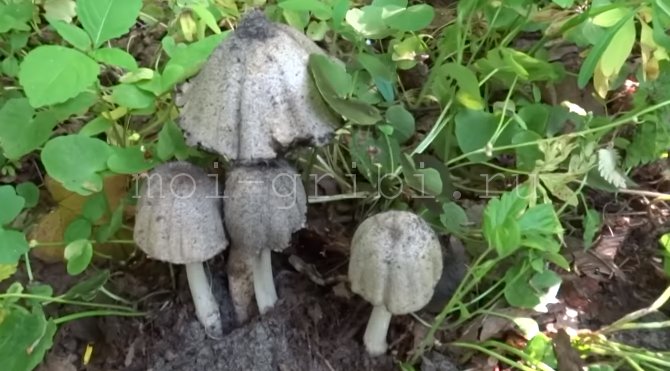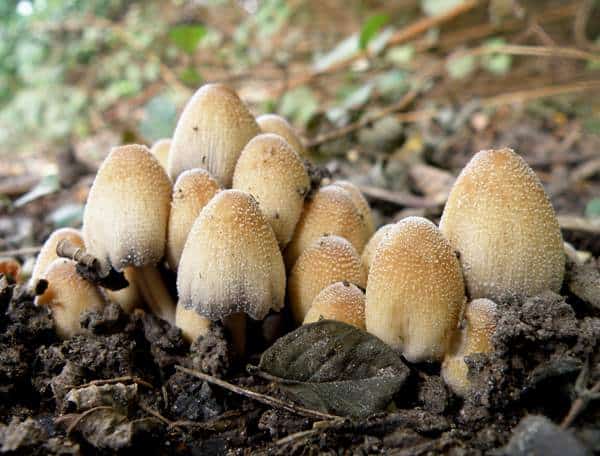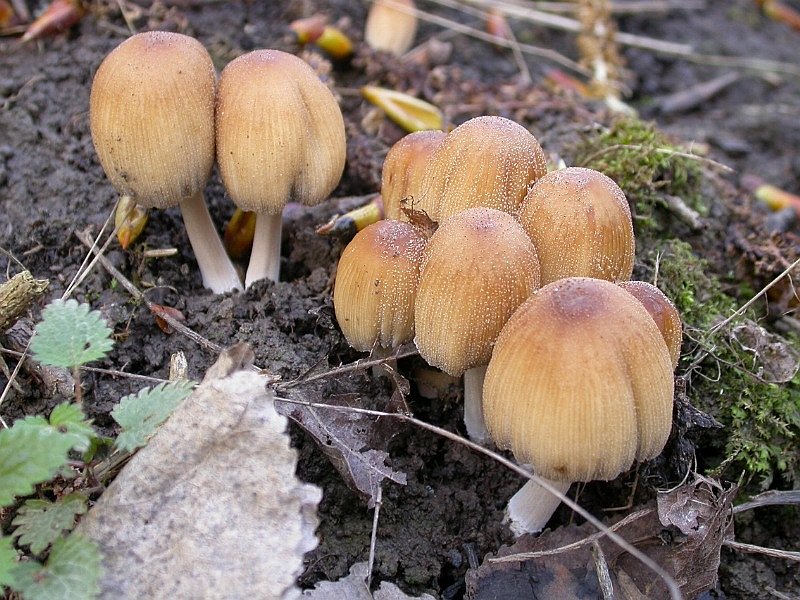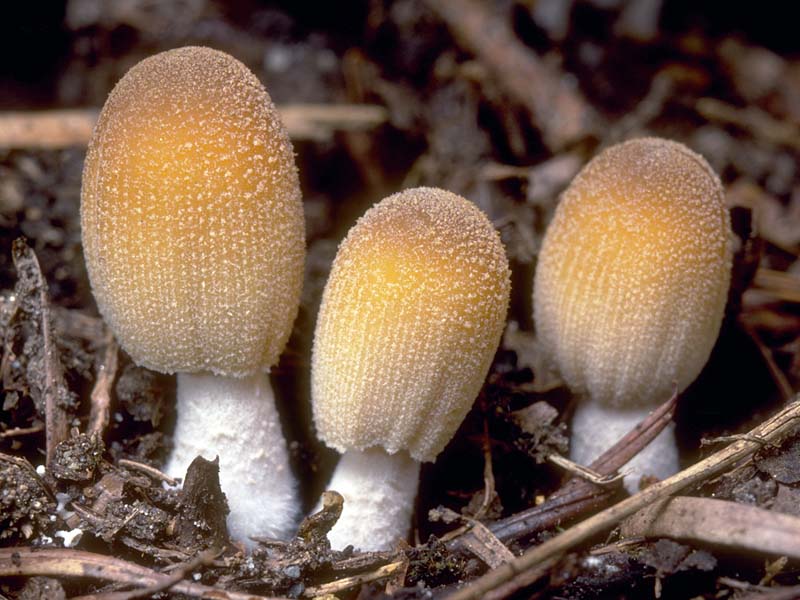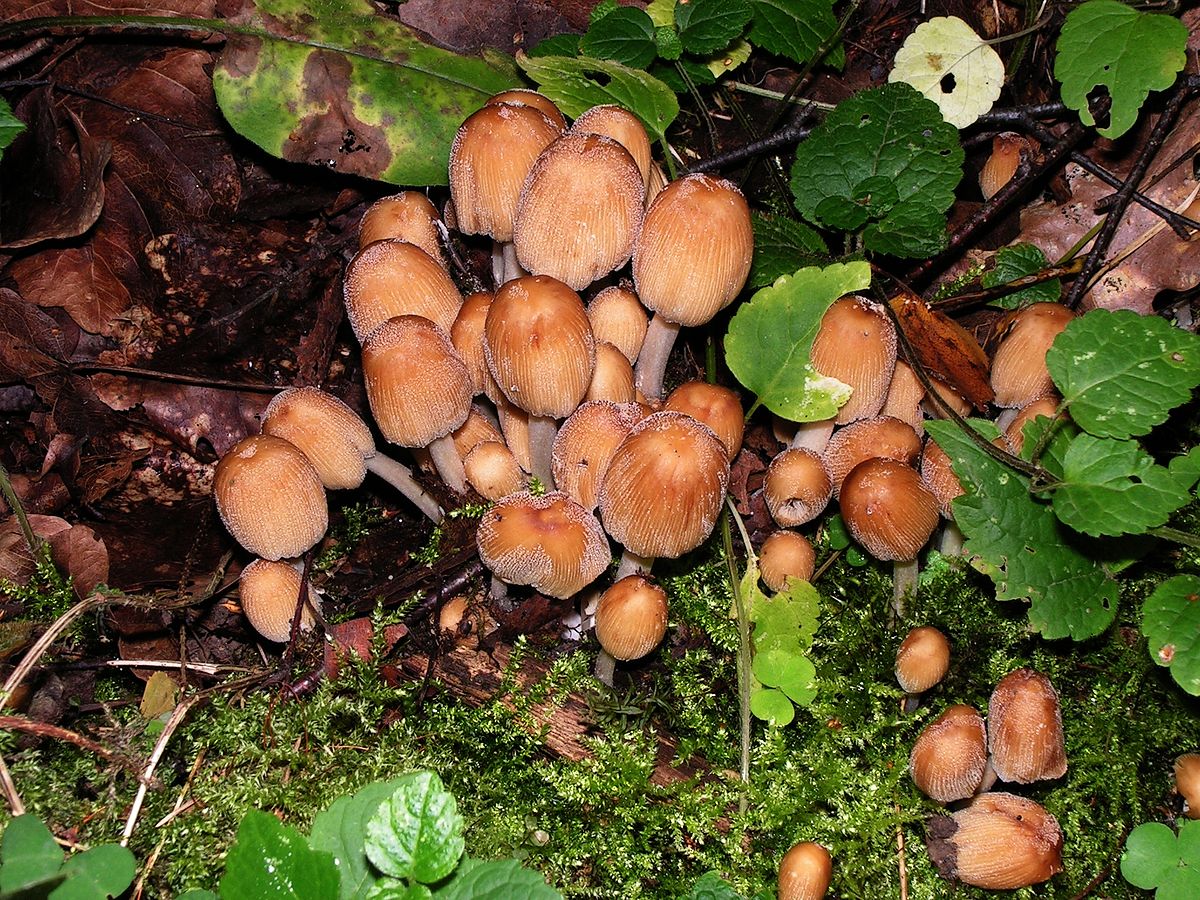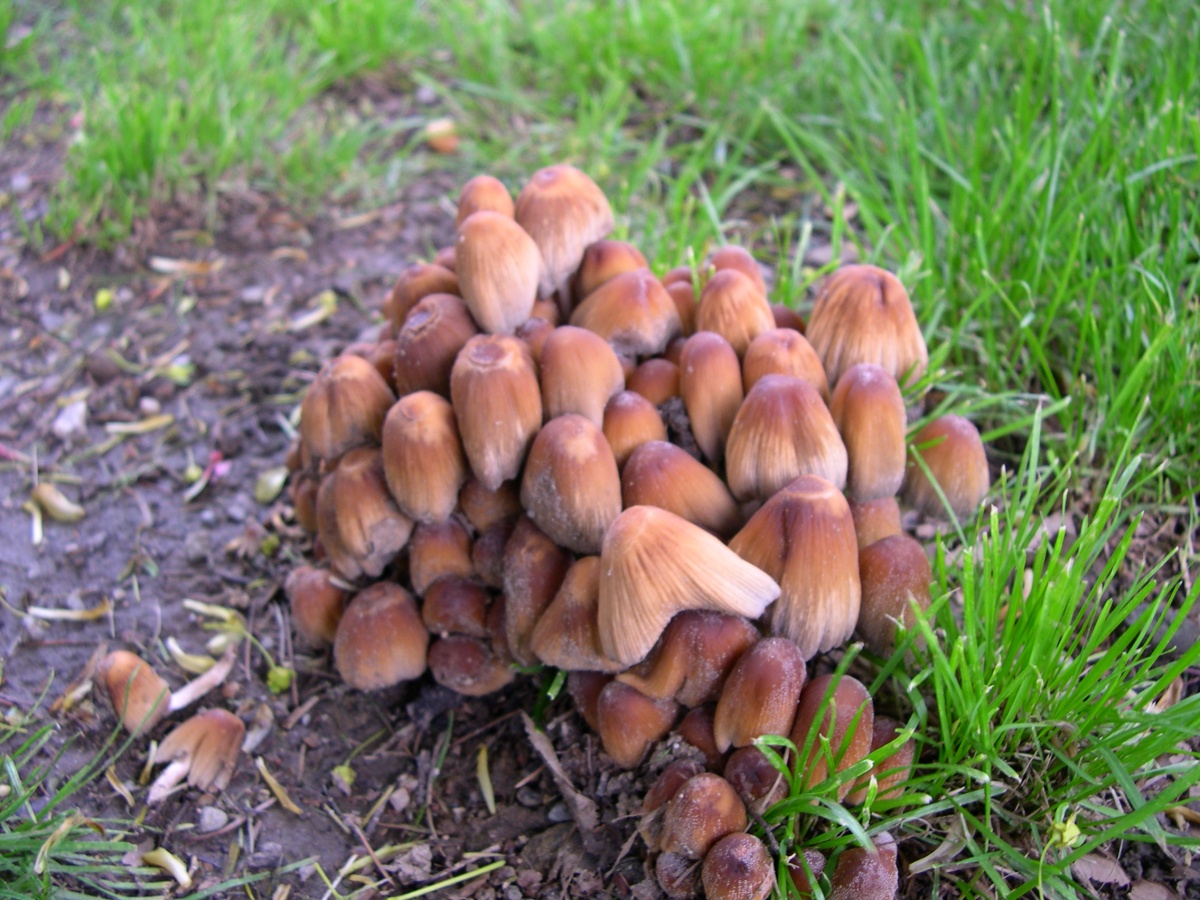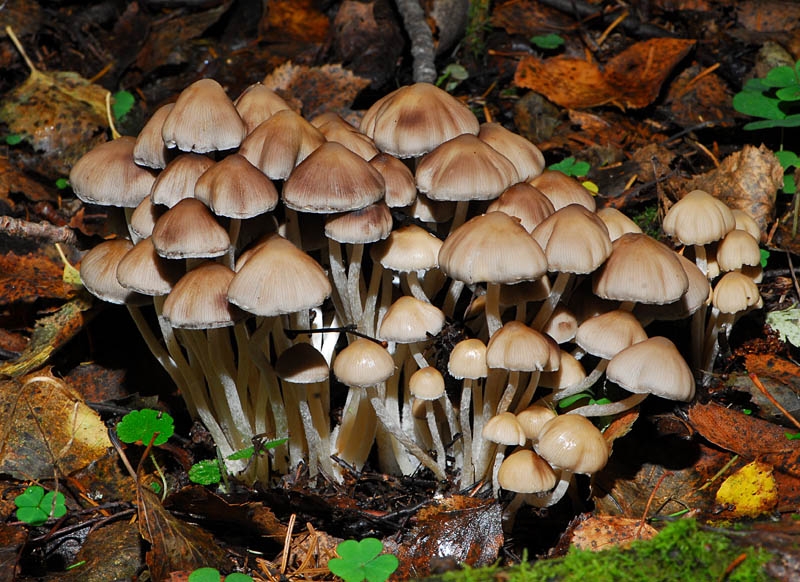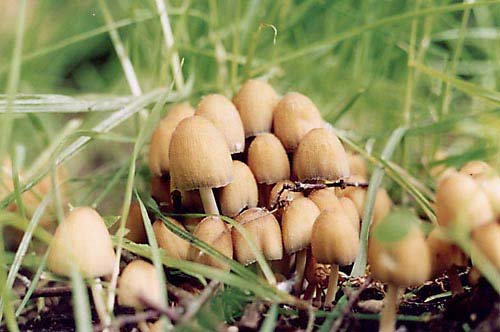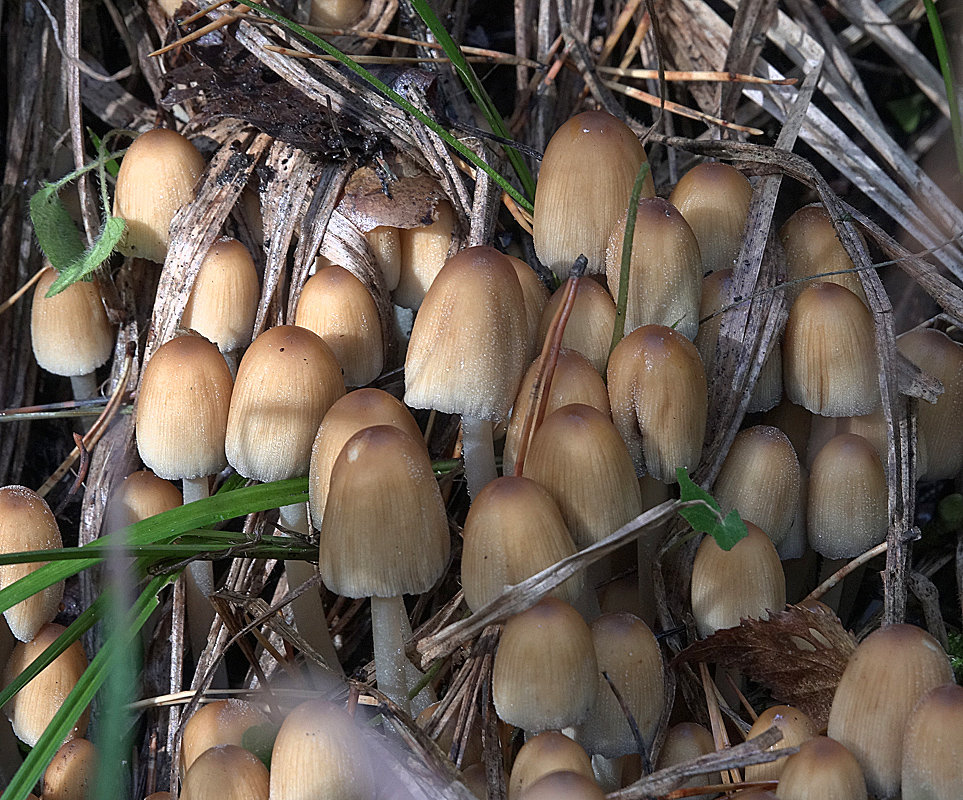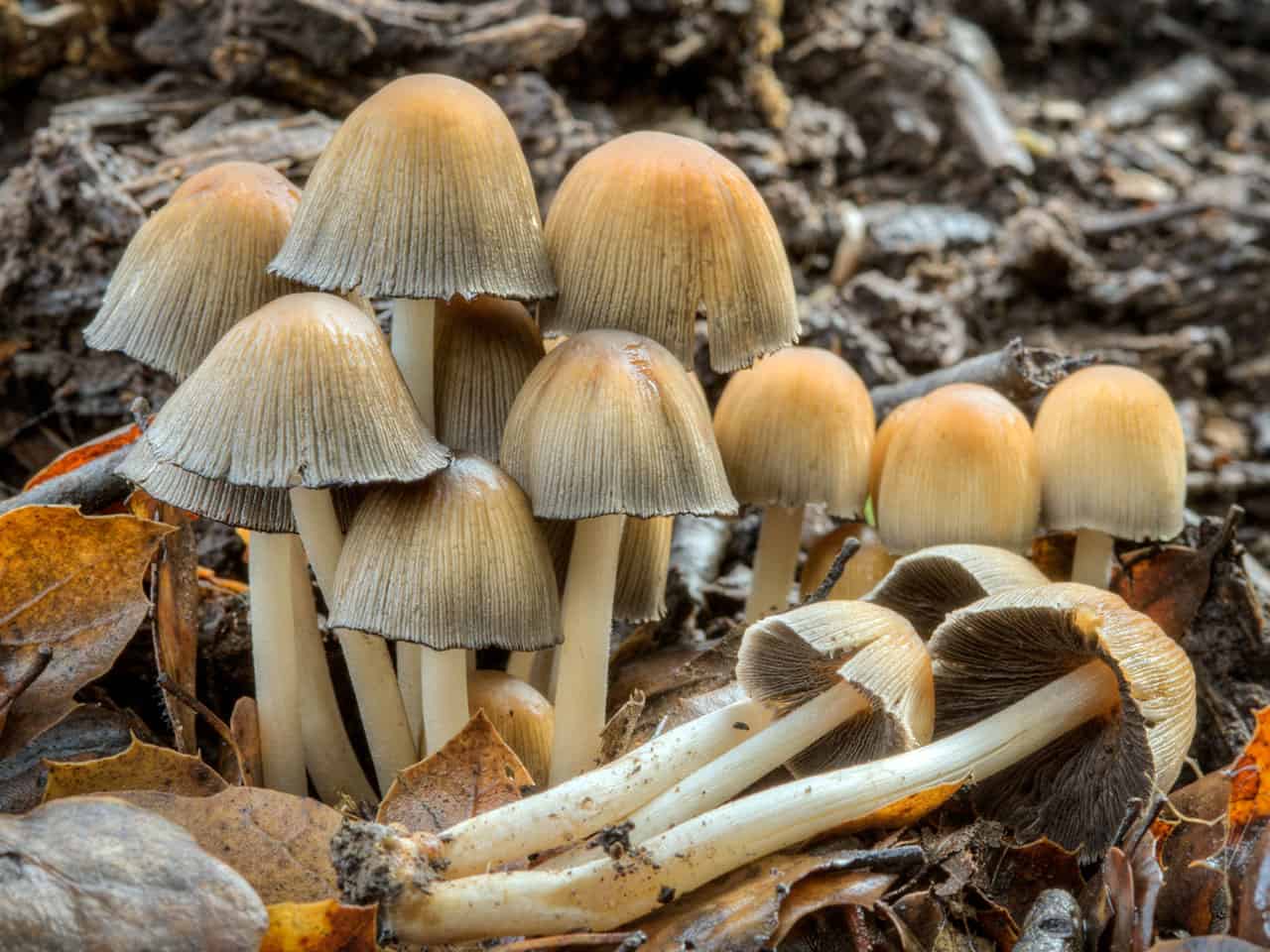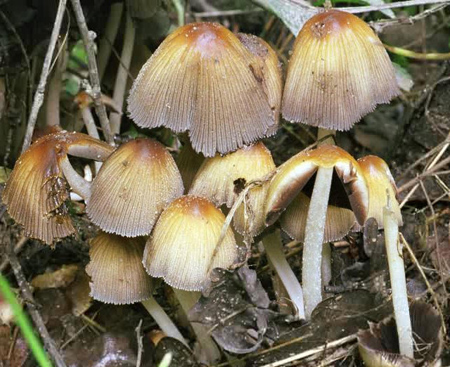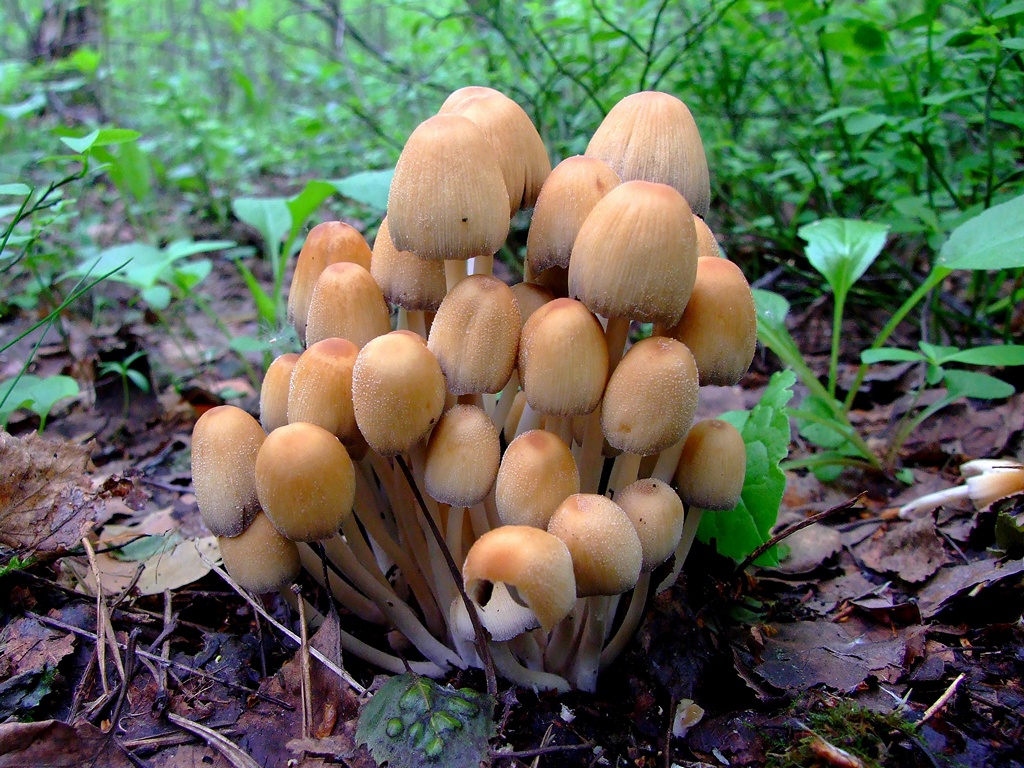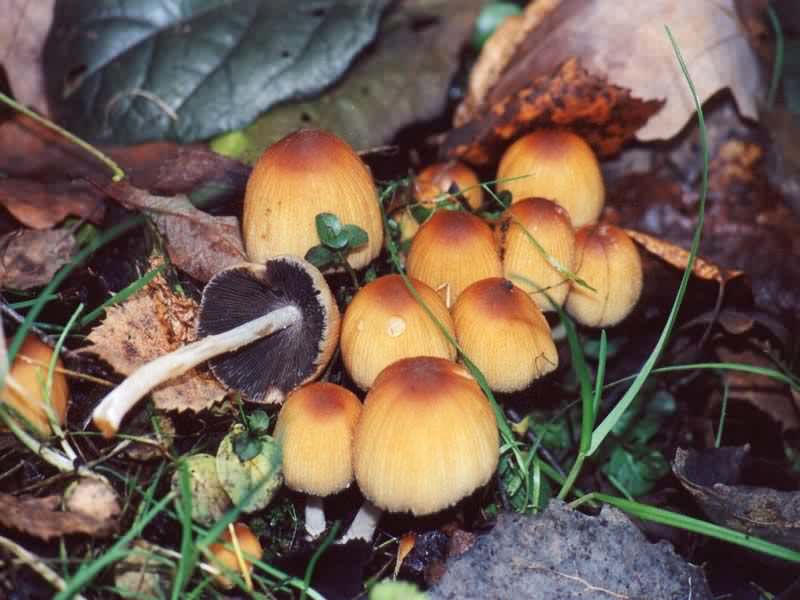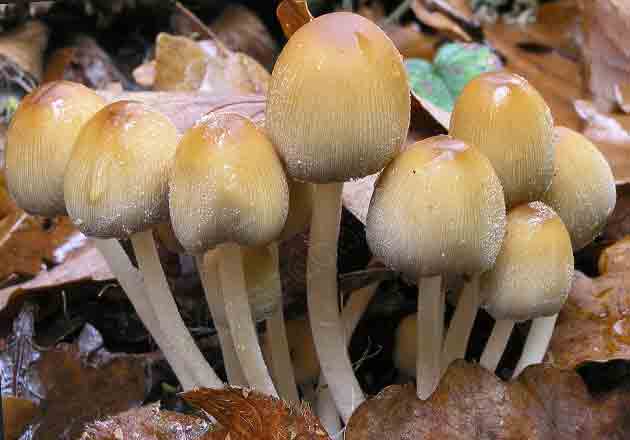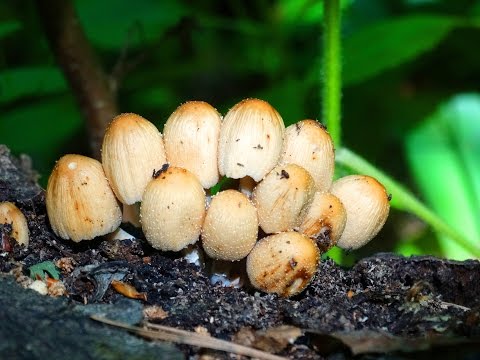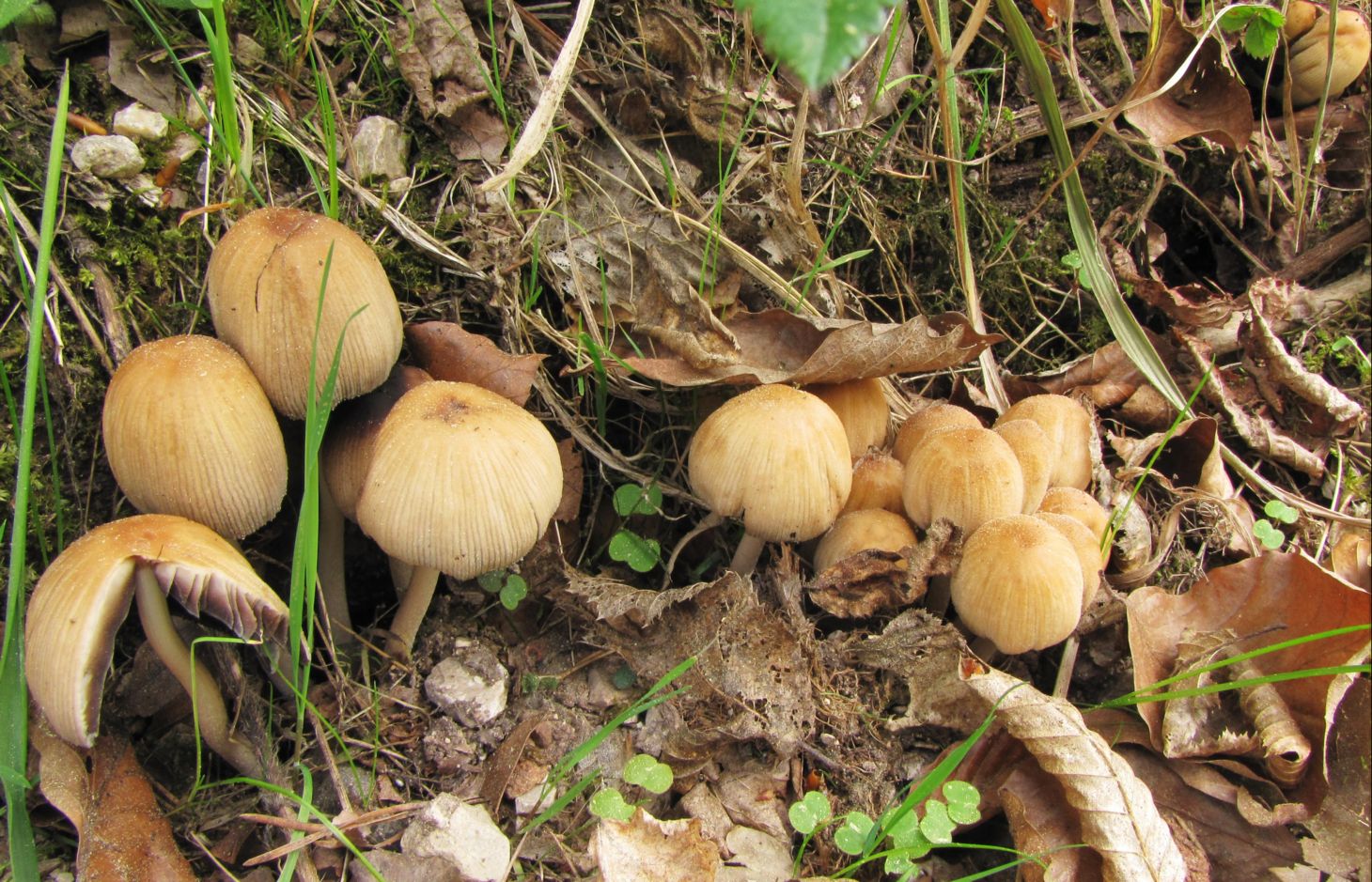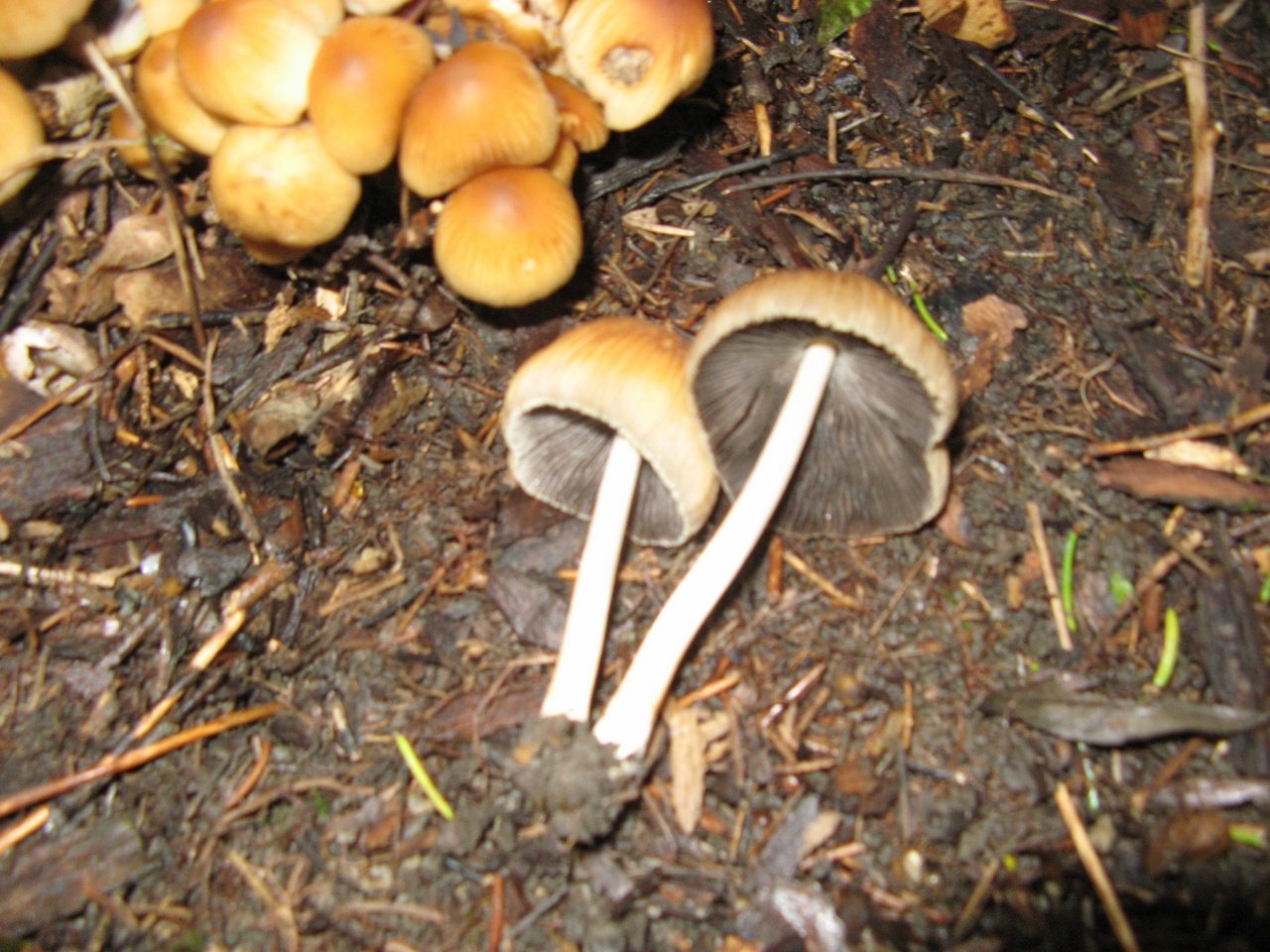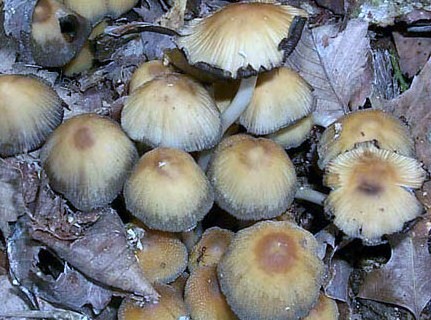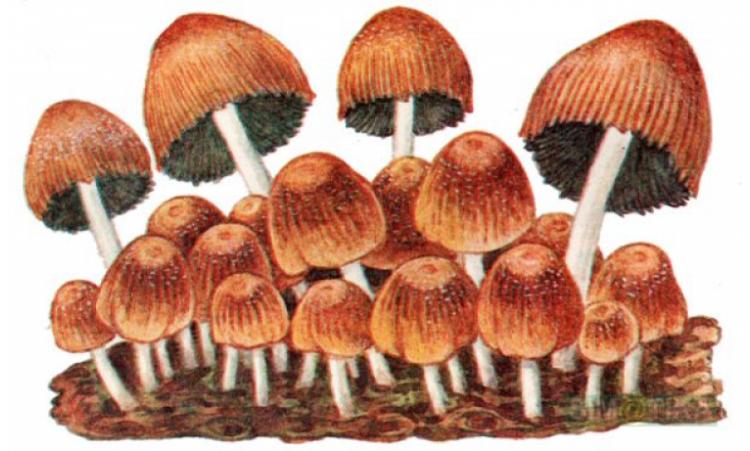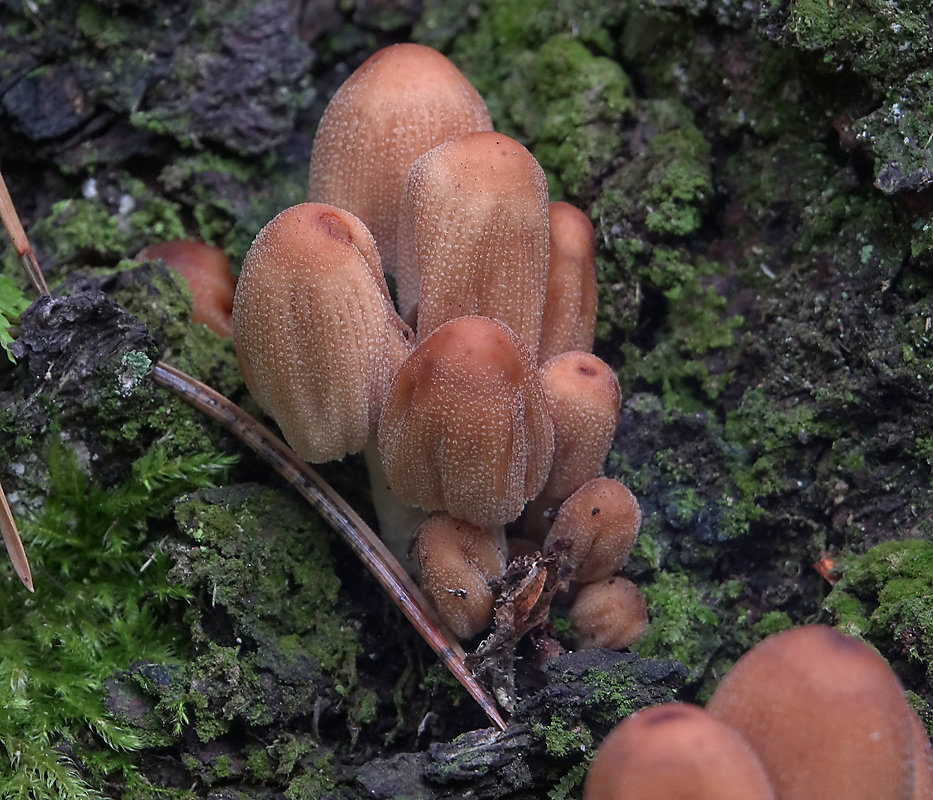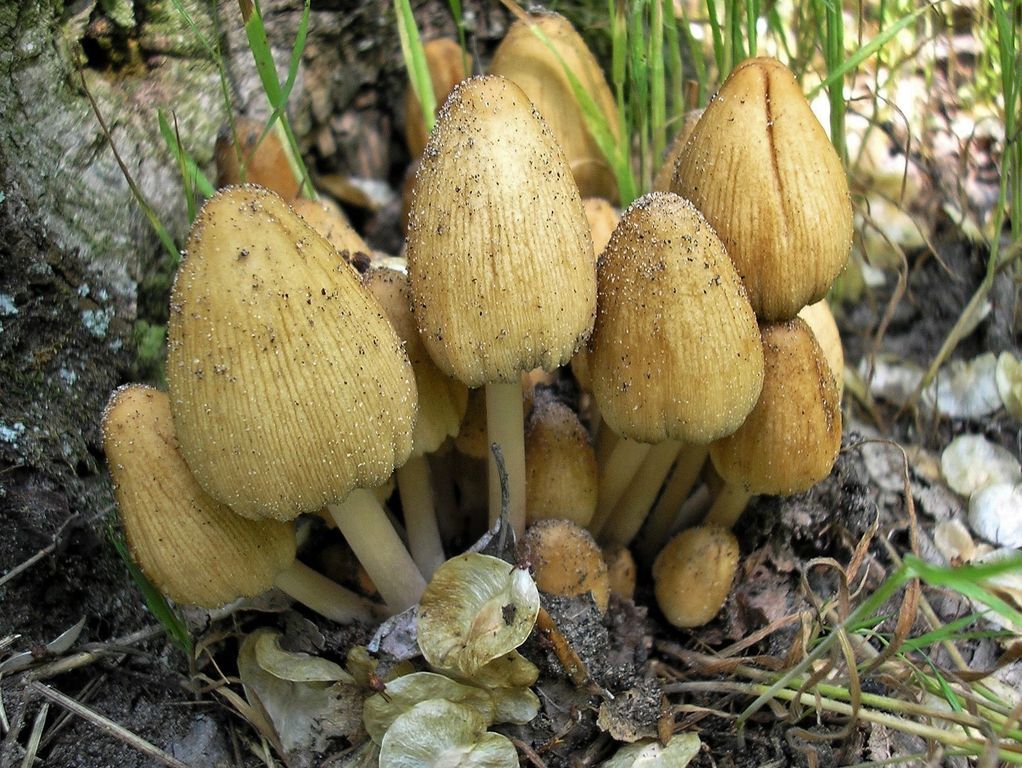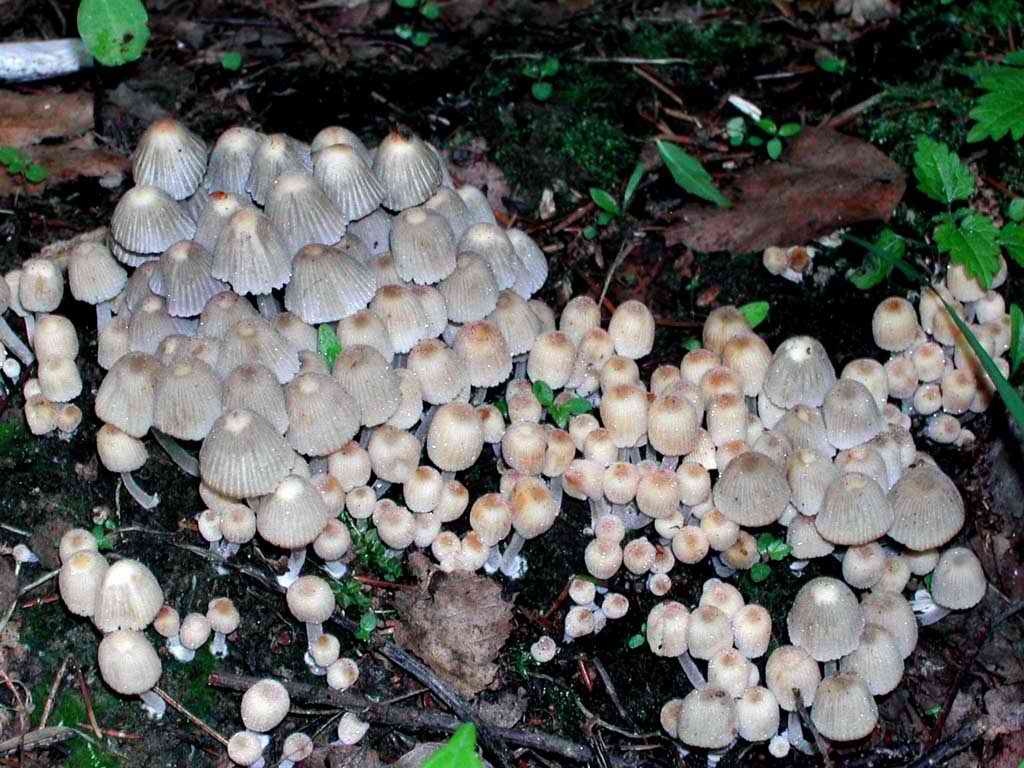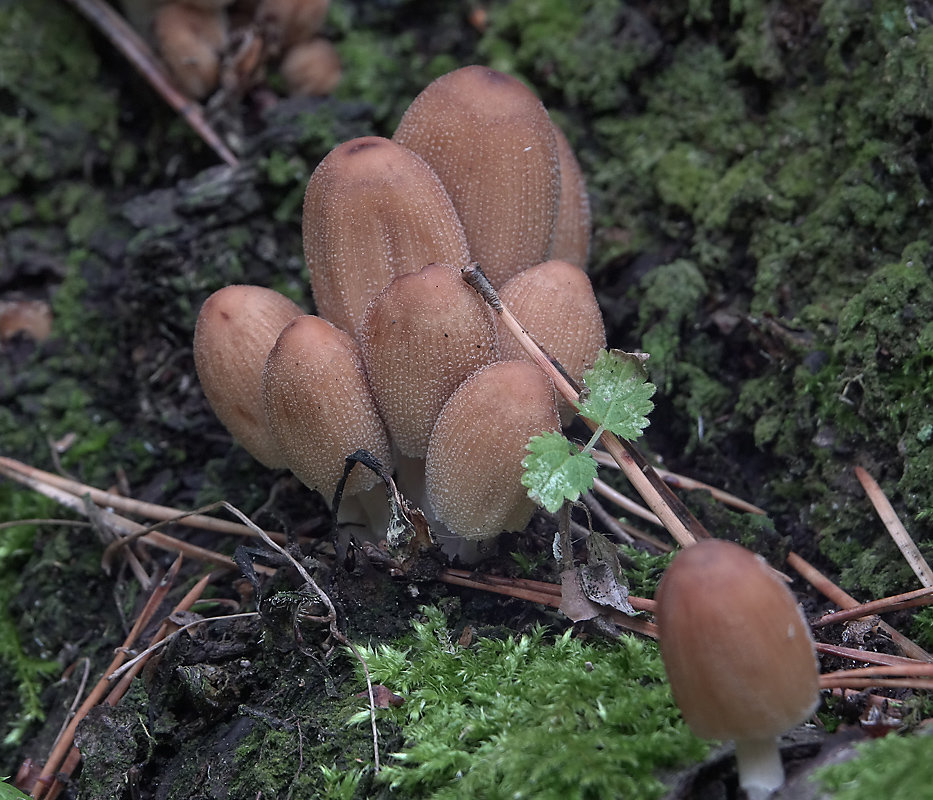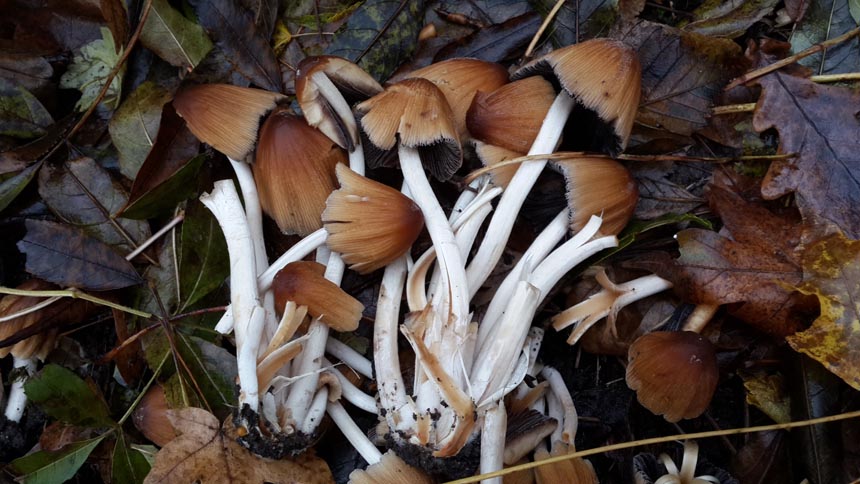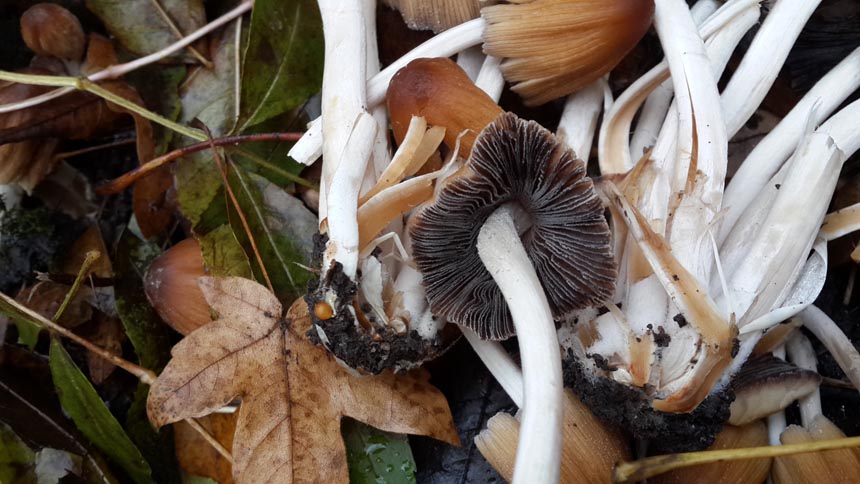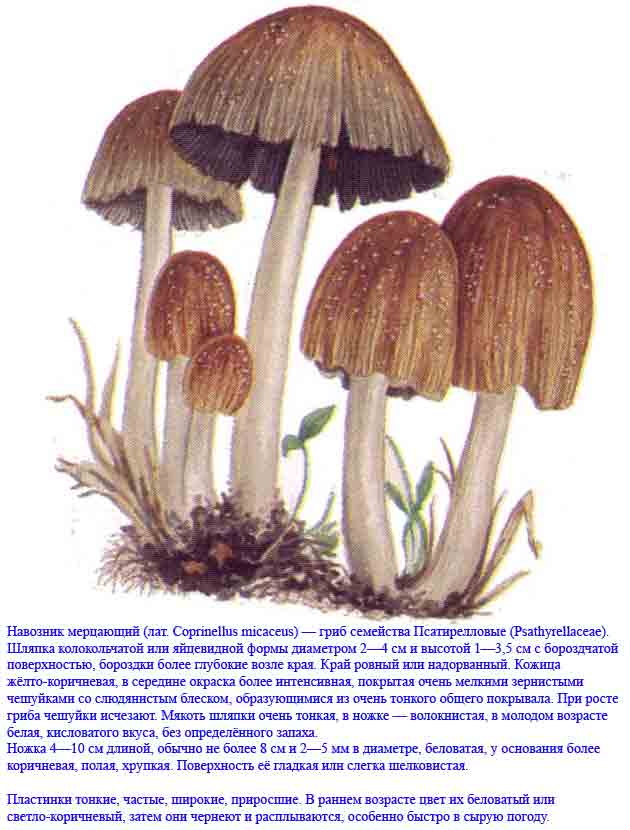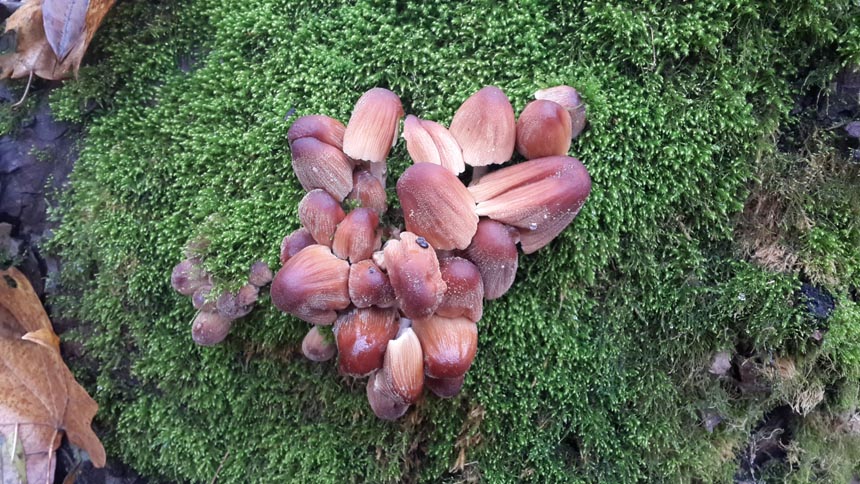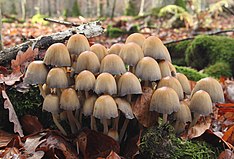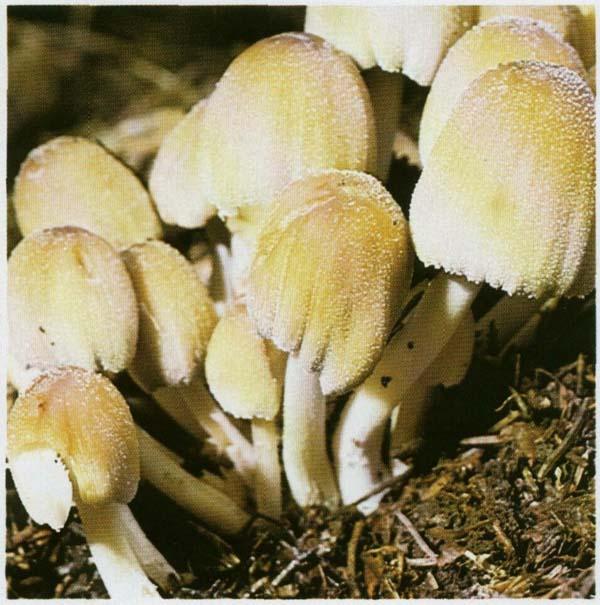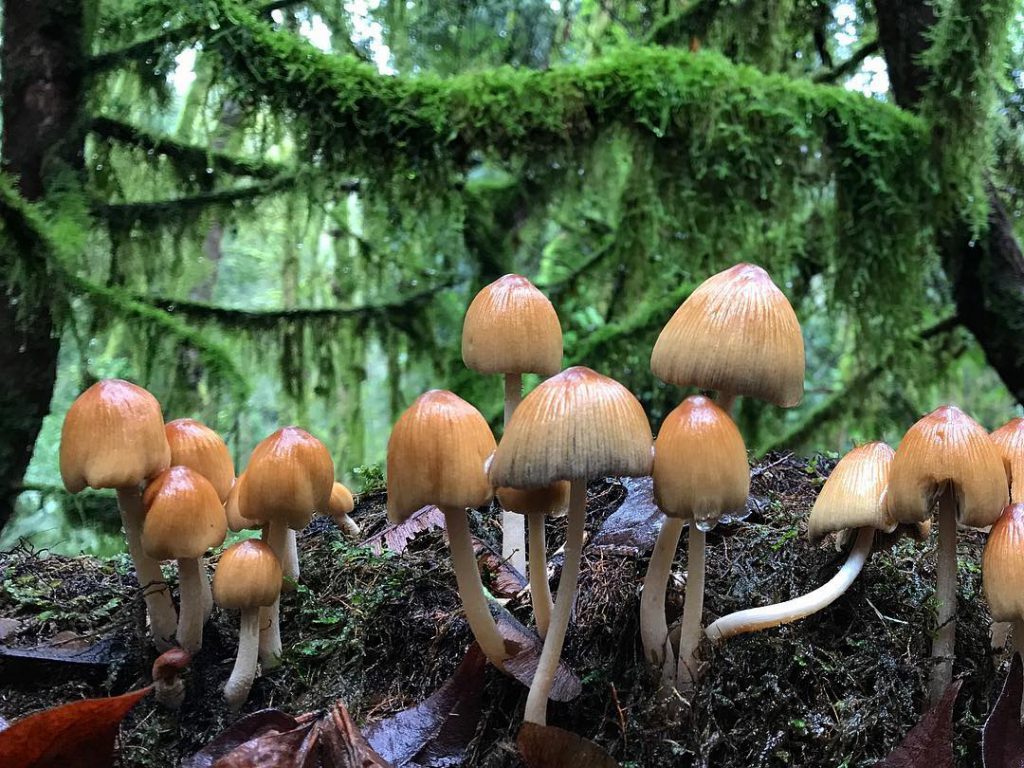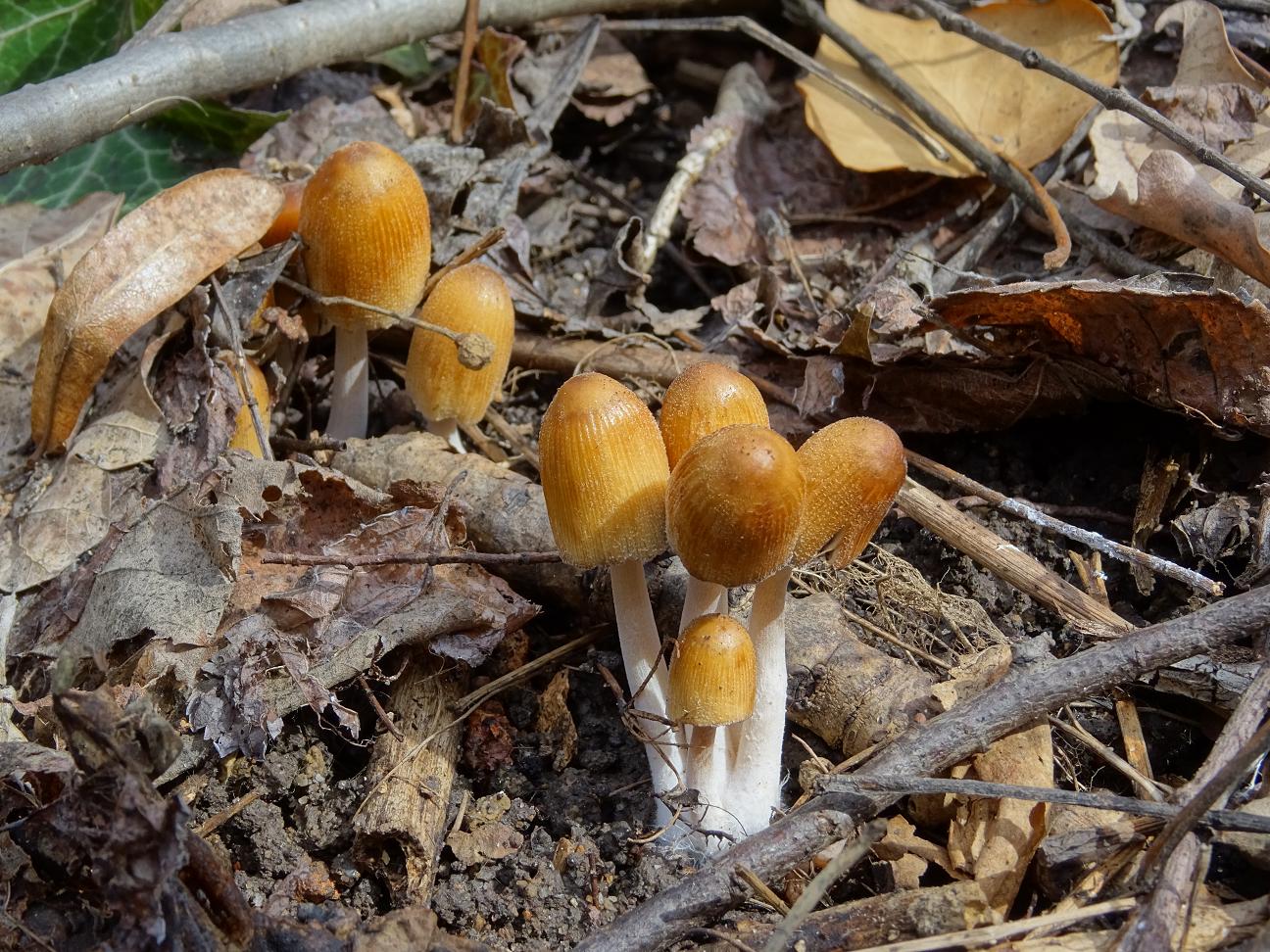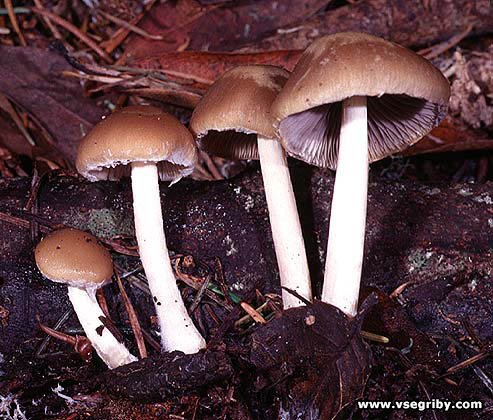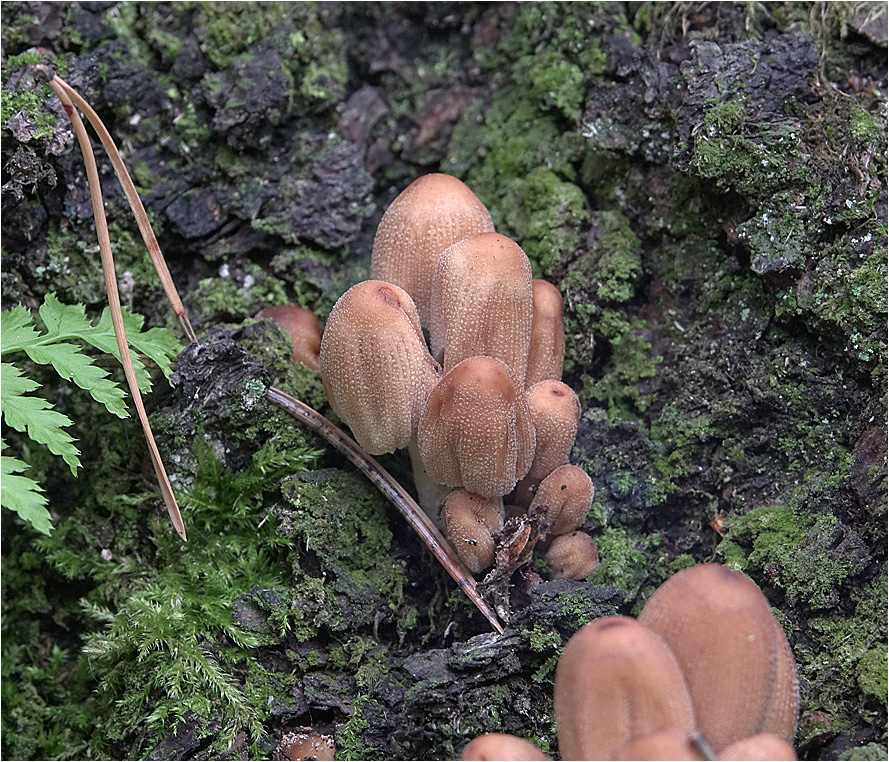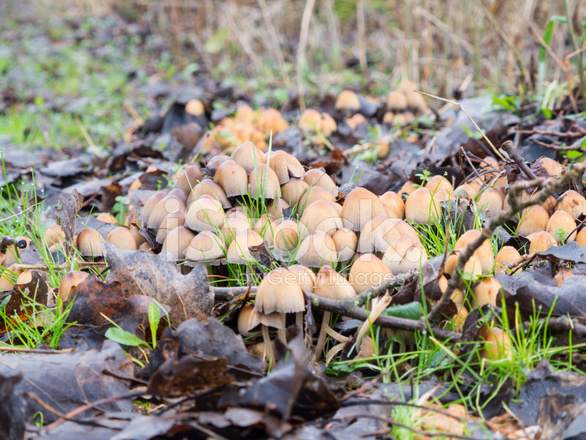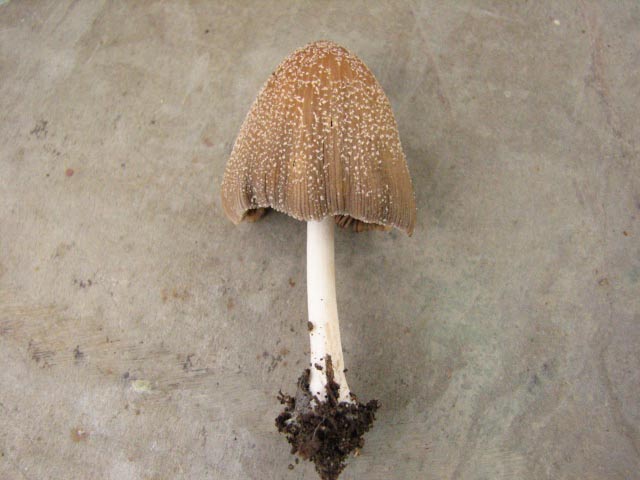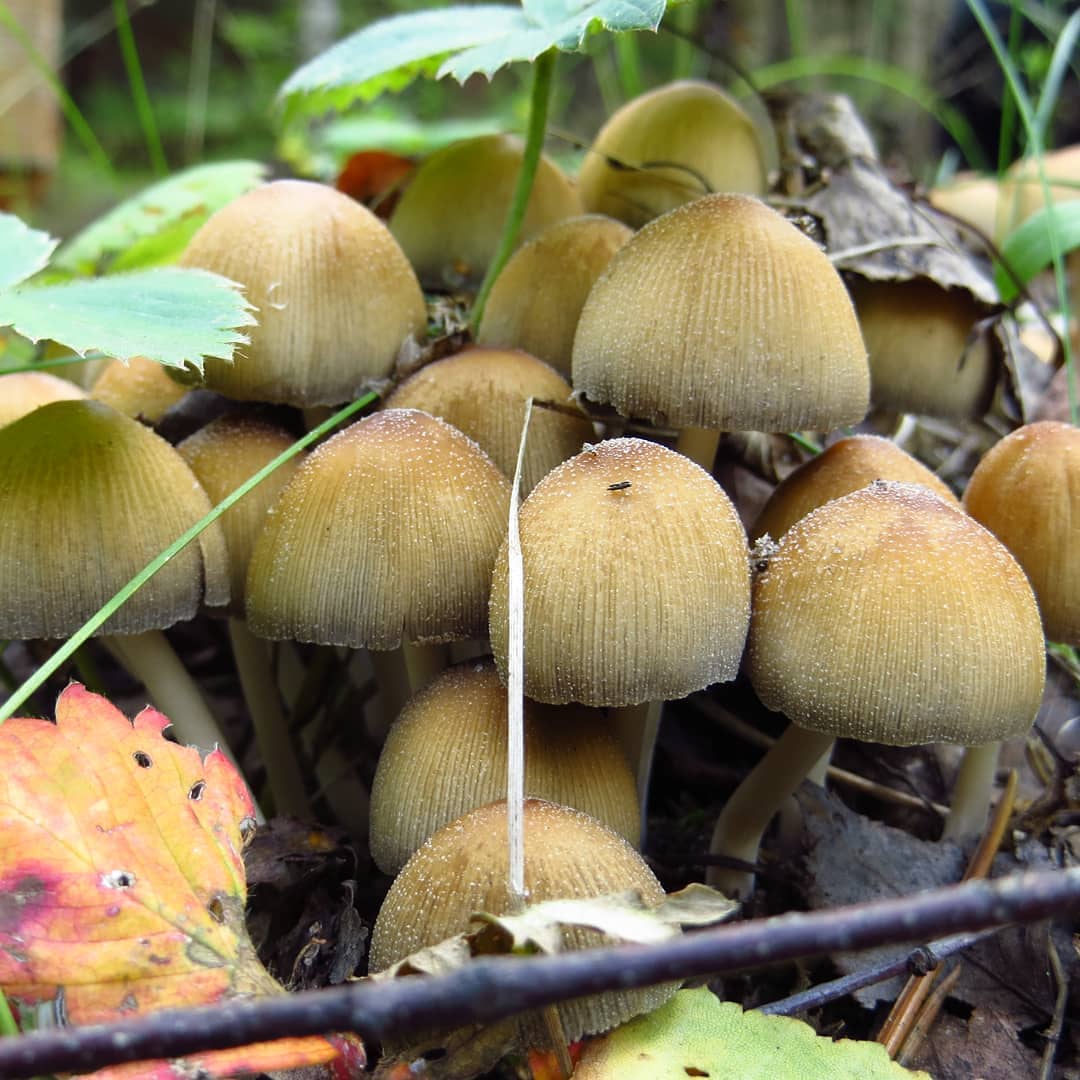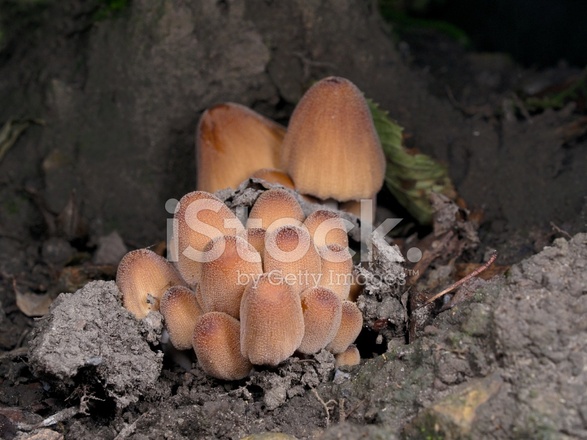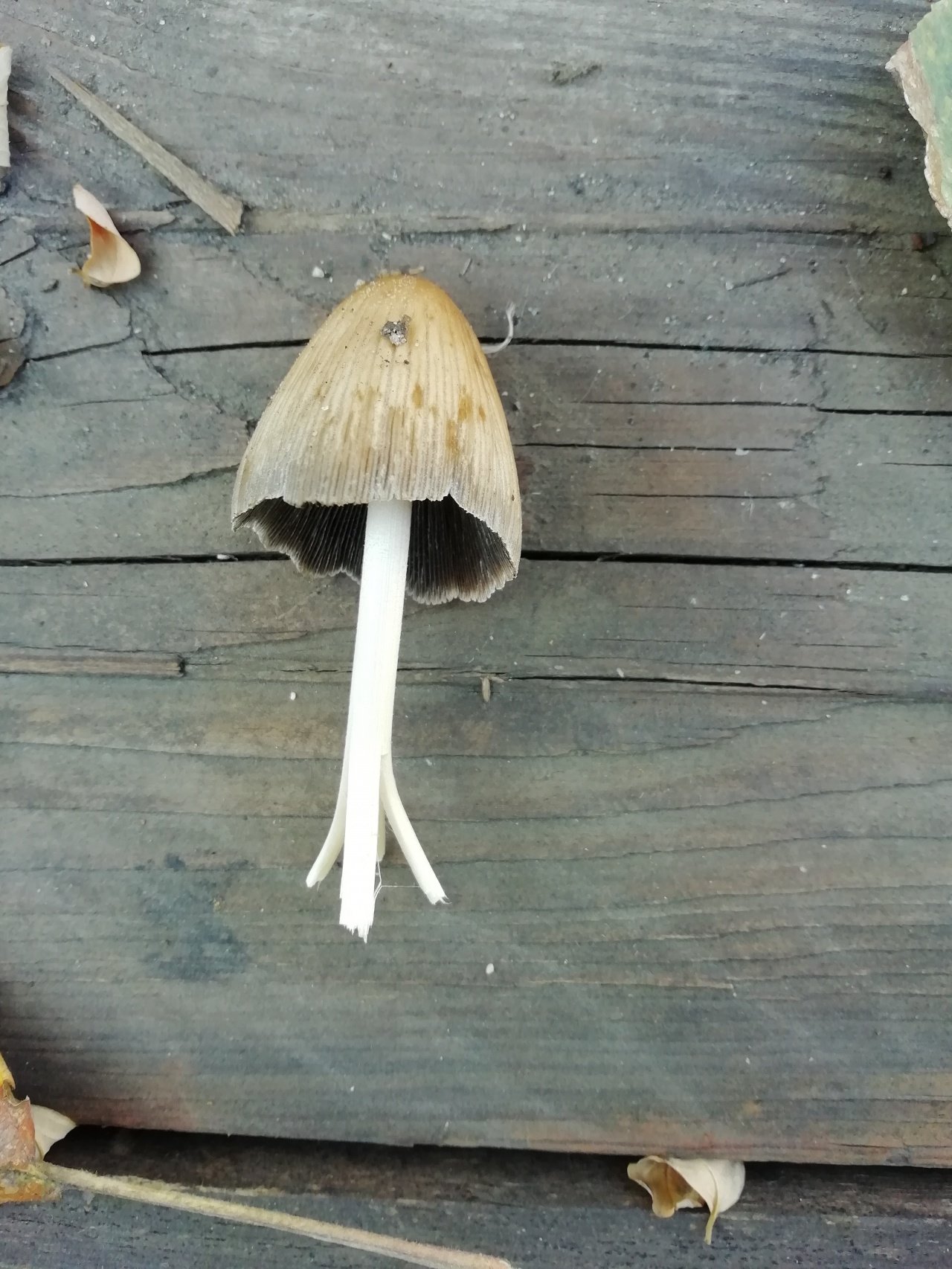Varieties and twins
The species composition of the Koprinus genus is constantly being revised. Some varieties, originally classified as dung beetles, were later isolated into separate genera or even transferred to other families; in relation to others, discussions are still underway.
Of course, there is no need to study and memorize all varieties of dung beetles, it is enough to be able to recognize only the most common of them
In addition, as with other mushrooms, in this case it is very important to know what to confuse Koprinus with, paying, of course, special attention to its inedible and poisonous counterparts.
Dung beetle white
Almost the only species of dung beetle that is unequivocally classified as edible is Coprinus comatus. The appearance of this mushroom is so characteristic that it is almost impossible to confuse it with any dangerous double.
You will be interested to know how to make delicious porcini mushroom soup.
Features:
- height 5–20 cm;
- egg-shaped cap (in young specimens - in the form of a spindle), always closed, snow-white with possible shades of grayish or beige, smooth and darker in the upper part, decorated with flaky scales over the rest of the area (because of this, the second name of the mushroom is shaggy dung beetle) ;
- the leg is white, thin (up to 2 cm) and long (up to 30 cm);
- pleasant "edible" smell;
- very fast growth (4-5 cm per day);
- harvest season - from late spring to mid-autumn;
- the place of growth - roadsides, orchards, vegetable gardens, fields, although it is also found in the forest.
It is worth saying that there is another species of dung beetles with a similar name - Coprinus niveus. He also has a white color, but his cap is smooth and as if dusted with flour, which is easily washed off. This species is classified as inedible.
Video: white dung beetle
Dung beetle gray
It is to the gray dung beetle (Coprinus atramentarius) that the name "ink mushroom" is best suited.
It is characterized by the following features:
- the diameter of the cap is 3–7 cm, the shape changes as it grows from ovoid to bell-shaped;
- the color of the cap is grayish brown, the top is darker;
- thin strips diverge from the top of the cap to the edges, which in adult mushrooms transform into cracks, after which the edges of the cap between these cracks rise up;
- plates are numerous, wide; in young mushrooms they are white, in adults they are brown, and after the onset of autolysis they are black;
- stem height 12–16 cm, thickness 1 cm, structure soft, watery, off-white color along the entire length, and in the lower part with reddish-brown blotches;
- the aroma is pleasant;
- shelf life is minimal: after collection, complete autolysis occurs in just a few hours.
Coprinus atramentarius is classified as a conditionally edible mushroom.
Video: gray dung
Romanesi dung
Another common species is very similar to gray dung beetle - Coprinopsis romagnesiana. Its main difference is a more pronounced "shaggy" (according to this quality, the Romagnesi is similar to the white dung beetle). The scales are dark brown with a possible tint towards orange or brown. In young mushrooms, the "fringe" fits tightly to the cap, but as it ripens, it becomes more fluffy at the edges. The leg is white, with a slight hairiness and, in some cases, with a seal in the lower part.
Check out the recipe for stewed potatoes with mushrooms.
The average size of the fungus is 6–12 cm in height, the thickness of the leg is up to 1.5 cm. Another feature by which Coprinopsis romagnesiana can be distinguished from gray dung beetle is the almost complete absence of smell (as well as taste). The fruiting period usually occurs in spring and summer, but there are repeated periods of appearance of these mushrooms in the second half of autumn.Like gray dung beetle, Coprinus romanesi is conditionally edible.
Dung beetle twins
In addition to those mentioned above, in the literature you can find descriptions and photographs of the following varieties of dung beetle and its counterparts:
| Russian name | Latin name | Consumer properties (according to various sources) |
| ordinary, or ash gray | coprinus cinereusc | conditionally edible |
| shimmery | coprinus micaceus | conditionally edible / inedible |
| home | coprinus domesticus | inedible |
| absent-minded | coprinellus disseminatus | inedible |
| narcotic | coprinus narcoticus | inedible |
| fluffy, or furry | coprinopsis lagopus | inedible |
| folded | parasola plicatilis | inedible |
| resinous, or magpie, or variegated | coprinopsis picacea | inedible |
| willow | coprinellus truncorum | inedible / poisonous |
Dung mushroom from alcoholism
Gray dung beetle and shimmering dung beetle can cause serious negative reactions when consumed in conjunction with alcohol.
Mushrooms contain a substance called coprin, which, when combined with alcohol, can cause dizziness, nausea, fever, and abdominal pain.
This feature was noticed by pharmaceutical companies, and began to use coprin (both natural and synthesized) for the production of drugs that help in the treatment of alcohol addiction. For the same purpose, dung mushrooms are also used in alternative medicine.
It is believed that daily consumption of small doses of coprinus causes a persistent aversion to alcohol in the patient.
For the same purpose, dung beetles are also used in alternative medicine. It is believed that daily consumption of small doses of coprinus causes a persistent aversion to alcohol in the patient.
But it is better to consult a doctor!

Dung beetle White or Ink Coprinus Comatus
Common mushroom dung with a tasteless name
The only truly edible mushroom of its kind. It has excellent taste and is highly appreciated by true connoisseurs. Also known as Ink Mushroom.
Appearance
The hat is up to 15 cm high and up to 10 cm in diameter, initially spindle-shaped, then bell-shaped. Has a white or grayish color that darkens over time, and is covered with very characteristic wavy "goofs". A dark tubercle is often visible in the center of the cap.
The hymenophore is lamellar, the plates are wide, very frequent and free, initially white, then turning pink, darkening, and self-destructing along with the cap. Spore powder, black.
Approximately two days after hatching from the soil, the cap begins to leak a dark liquid, blackens and dries up until all turns into ink.
The leg is long, up to 35 cm high and up to 2 cm in diameter, hollow and cylindrical, centrally located. The leg is white, with a silky shade, and a slight thickening is visible at the base. A fragile white film ring remains on the top of the leg, which often falls off as the fungus grows, and if it does not have time to fall off, it darkens strongly from the "ink" dripping from above.
The pulp is soft and white, with a slight pleasant taste and smell.
Where and when it grows
White dung beetle is widespread throughout the northern temperate zone, found everywhere where there are loose, well-fertilized soils - in fields, orchards, vegetable gardens, in cities near garbage dumps and garbage dumps, on dung heaps and along roads. Can get caught in general in the most unexpected places. It is often found simultaneously in colossal quantities. Fruiting from May to late autumn.
Culinary application
Not all collectors are aware of the wonderful taste of this mushroom. Due to its small size, characteristic appearance and habit of growing anywhere, including in the most unappetizing places, many take it for a kind of toadstool. However, those who are familiar with the taste of White Dung bean appreciate it extraordinarily. According to experts, this mushroom is especially good fried with an omelet or sour cream. In France, Czech Republic and Finland Dung is generally revered as a delicacy.
When eating White Dung for food, you need to follow some rules:
- Fruiting bodies can be harvested only at a very young age, until the hymenophore plates begin to darken - about two days after the mushroom emerges from the ground. There is evidence of the successful use of Dungs in food and with an already fairly darkened hat - but you should not experiment with this once again.
- The decomposition process continues in already cut mushrooms, therefore, they must be started to process no later than 2 hours after collection. According to available information, the process of "inking" continues to occur even in frozen copies.
- It is recommended to boil the dung for 15 to 20 minutes before use. Those who like to cook this mushroom immediately in its raw form are desperately arguing with this, claiming that boiling only reduces the taste of the mushroom. Whether this is so or not, and who, in this case, is right is still unknown.
- It is not recommended to mix dung beetles in the same dish with other mushrooms.
- It is believed that Dungs accumulate with particular zeal in themselves various toxic substances, so they are not advised to collect them along major highways, industrial enterprises and other sources of environmental problems.
- The evidence of the toxicity of this mushroom when interacting with alcohol has not been confirmed, so dung beetle does not help from drunkenness. However, this should not serve as a reason for abuse either.
For special purposes
This type of Navoznikov has long had one more use. The ink produced by the self-decomposition of the cap was used to draw up especially important government documents. It was believed that the inscriptions made with this ink could not be counterfeited, because if you look at the document through a microscope, then in the frozen ink, the spores of the fungus will be clearly distinguishable, making up a unique pattern that could be fixed, and it was impossible to deliberately repeat.
Description of the shimmering dung beetle.
The shape of the cap of the shimmering dung beetle is at first ovoid, later it becomes bell-shaped, it almost does not open completely. Its diameter is 1-4 centimeters. The color of the cap is yellow-brown, while frequent folds are visible on the surface from the plates. The mushroom was called shimmering because its cap is covered with a large number of shiny scales, which shimmer depending on weather conditions. However, these scales are easily washed off with water.

There are frequent plates under the head. At first they are light, almost white, and then they darken, become almost black and undergo autolysis, that is, they decompose. But the autolysis of the shimmering dung beetle is less pronounced in comparison with the white dung beetle. The spore powder has a brown-black color.
The leg is rather long and relatively thick. The leg is hollow inside. The color of the leg is white. It is smooth at the top and silky at the bottom. There is no ring on the leg.
Description of folded dung
In youth, the cap is yellowish, with age it opens. The flesh of the cap is thin, and the plates protrude, due to which the mushroom resembles a half-open umbrella. Most often, the caps never fully open, remaining half-open. In young specimens, the color is yellowish, while in older specimens it becomes lighter. The center is darker. The surface of the cap is folded. The diameter of the cap does not exceed 1.5-3 centimeters.
The plates are rare, they grow to the collarium (a kind of collar). With age, the plates become darker. But unlike other representatives of the genus, the folded dung beetle does not autolysis, that is, its plates do not turn into "ink". Black spore powder.
The leg of the folded dung beetle is thin, its length is 5-10 centimeters, while it is very thin - no more than 1-2 millimeters wide. Her color is white. The ring is not available. The leg is very fragile, most often after 10-12 hours, after the dung beetle is on the surface, its leg breaks and it falls.
Distribution of folded dung beetles
These mushrooms grow everywhere, they are found in meadows and along roads. Folded dung beetles bear fruit from May to October. Due to the fact that these mushrooms have a very short life cycle, they are hardly noticeable.
Similar species
Young folded dung beetle can be confused with golden bolbitius, but the difference becomes noticeable after a few hours.
In addition, there are several representatives of the genus that have an external resemblance to folded dung beetles.
Other mushrooms of the genus
Flickering dung is a conditionally edible mushroom. The shape of its cap is at first ovoid, and then it becomes bell-shaped, it almost never fully unfolds. Its diameter does not exceed 4 centimeters. The color of the cap is yellow-brown. The surface is grooved from the plates. The mushroom was called shimmering because its cap is strewn with a large number of shiny scales that can be washed off by rain. The stem is long and relatively thick, dense, white, without a ring.
Dung beetles grow, shimmering on rotting trees. Most often found in large clusters. Fruiting time is spring-autumn.
The hairy dung is an inedible mushroom. The shape of the cap at a young age is fusiform-elliptical, during the day it opens and becomes bell-shaped, and over time it becomes almost flat. The hat is no more than 1-2 centimeters in diameter. The surface of the cap is covered with the remains of a bedspread, between which an olive-brown color is noticeable. The height of the leg reaches 8 centimeters, and the diameter does not exceed 0.5 centimeters. The leg is often curved. Its surface is white with light scales.
Hairy dung beetles bear fruit in summer and autumn. They grow in various places, on the decayed remains of deciduous trees. Sometimes they can settle on manured soil. Fruiting bodies develop very quickly.
Other types of dung beetles
There are many types of dung beetles. It is impossible to say exactly how many there are today, since scientists often eliminate some species, or decide that a species should belong to a different family.
- Hairy mucosa. This mushroom should not be eaten. The hat has a fusiform shape, but the next day it takes on the shape of a bell. And after a while, it becomes almost flat. Even at the bell-shaped stage, the cap begins to decompose. Small white flakes are visible on the surface. The flesh of the mushroom is fragile, the stem is usually curved and has scales. The fruiting period begins in summer and lasts until autumn. The mushroom grows on rotting trees or in pasture where the soil is fertilized with manure. The body of the fungus develops and withers rapidly.
- The folded dung is also unusable. At first, his hat is convex, and then it takes the form of a half-open umbrella. It has a yellow color, due to the plates, the surface of the cap is in folds. The leg is white, thin, and has a smooth surface.
These mushrooms grow from late spring to mid-autumn. You can see them in the meadow.

